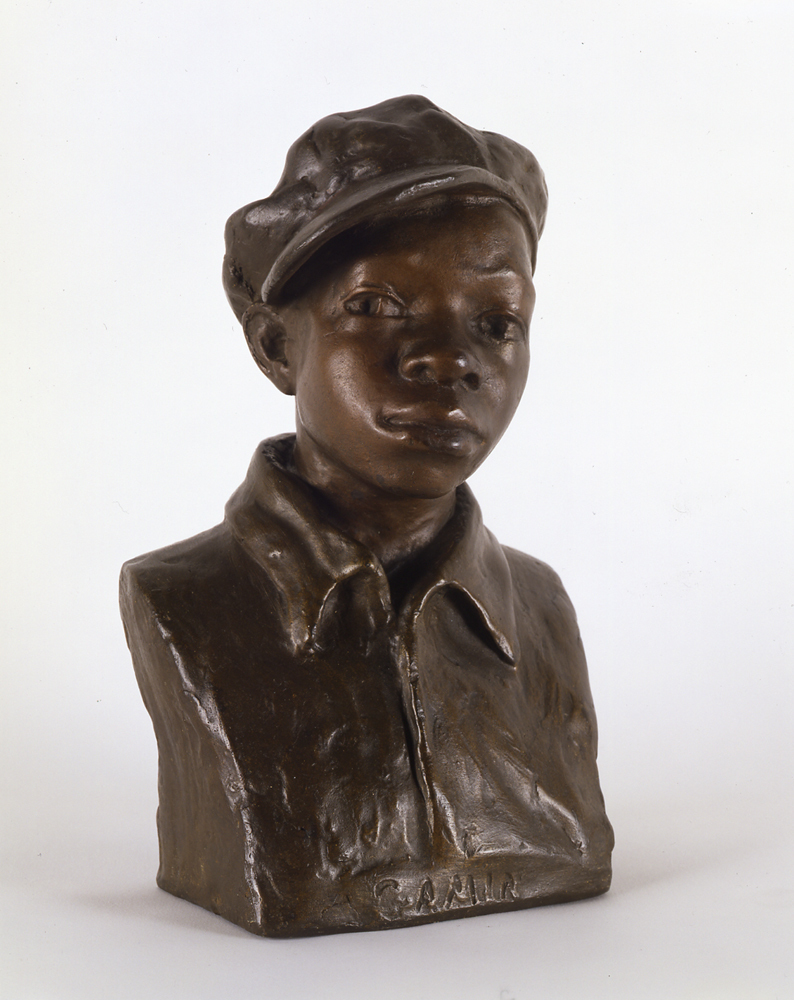The first art gallery dedicated to the sale and exhibition of black art was opened in 1939 by an influential female activist, art educator and artist, Augusta Savage. She battled poverty, racism and sexism to become one of the foremost artists of the Harlem Renaissance.
For many years, her pioneering act for women of colour in the world of art has gone unnoticed, but today, after 80 years, her work is the focus of an exhibition at the New-York Historical Society, curated by Jeffreen Hayes and coordinated for the historical society by Wendy N.E. Ikemoto.
Her sculptures celebrate African American culture, and her work as an arts educator, activist, and Harlem Renaissance leader catalyzed social change.
Born Augusta Christine Fells in Green Cove Springs, Florida in 1892 to Edward and Cornelia Fells, she was the seventh of 14 children. Her passion for sculpting began as a child. She would use red clay to sculpt
That habit, according to her biography, often got her into trouble with her father – a Methodist minister – who viewed his child’s handiwork as “graven images” outlawed by the Bible’s 10 Commandments.

“My father licked me four or five times a week,” Savage once recalled, “and almost whipped all the art out of me.” With a $4.60 cents in her pocket, Savage reportedly moved to Harlem where she cleaned houses to pay her rent while studying at The Cooper Union School of Art.
In 1923 when Savage was 30 years old, she won a scholarship to study at the Fontainebleau School of Fine Arts in France, but was denied admission due to her complexion.
According to The Guardian, a typewritten letter from the admissions committee read that “it would not be wise to have a colored student… as complications would arise, and the student would suffer most from these complications”
Ikemoto said: “The white women would feel uncomfortable sharing accommodations on the ship, sharing a studio, sharing living spaces. She alerted the press, [and] it made headlines. As a black woman during the Jim Crow era in the 1920s, it was really extraordinary.”
Harlem community members supported her. WEB Du Bois reportedly wrote letters on her behalf to fight for her admission and in 1929, she was permitted to study in France. She returned from her studies during the Depression and founded her own art studio and school where she gave free art lessons.
She would later found the Savage Studio of Arts and Crafts in 1932. Her studio, according to reports, was the foundation for some of the most well-known figures of the Harlem Renaissance.
Savage taught renowned painters like Jacob Lawrence of the great African American migration north, abstract painter Norman Lewis, portrait artist Gwendolyn Knight and Charles Alston, famed for his bust of Martin Luther King Jr, which was the first artwork of an African American in the White House.
Savage sculpted portrait busts of African American leaders, including NAACP leader James Weldon Johnson. During the 1939 New York World’s Fair, Savage was commissioned to make a sculpture and produced a monumental work called “Lift Every Voice and Sing”. World’s Fair officials changed the name to The Harp.

“The strings of the harp are formed by the folds of choir robes worn by 12 African American singers,” Ikemoto explained. “Then, the soundboard of the harp is formed by the hand of God.” Five million visitors saw The Harp and it became one of the Fair’s most photographed objects.
Unfortunately, the 16 feet high piece, made of painted plaster, Ikemoto noted was destroyed and smashed by clean-up bulldozers at the end of the fair. So much of Savage’s artwork no longer exists today.
While some were said to have been destroyed by the artist, others fell apart because they were made with fragile materials like plaster. Others mysteriously vanished. However, her rare sculptures included Gamin, a 1930 portrait of her nephew Ellis Ford, and Diving Boy from 1939, two of 12 sculptures of her work that still exist today.

Described as one of her most poignant pieces is a bust of the boxer Jack Johnson, in a work dated 1942 entitled the Pugilist. It shows Johnson, who became the world’s first black heavyweight champion after beating the Canadian Tommy Burns in 1908, standing with his arms crossed.
Savage dedicated herself to teaching black artists how to sculpt, draw and paint. “She said her legacy is in the work of her students”. “Even when they didn’t have money to buy their own art supplies, she let them use hers. She often said, ‘I know much I was put down and denied, so if I can teach these kids anything, I’m going to teach it to them,’” Ikemoto said.
“She was keen on creating an infrastructure for black artists, the need for a network for African American artists to succeed,” Ikemoto said during the exhibition of Savage’s work. “Savage once said in all the African American homes she visited, only two had artworks by African American artists. She asked: ‘How does the African American artist survive?’
She had no fund to run her galleries commercially, so they failed and Savage left the art world in 1940. She moved to a farm in Saugerties, New York, near Woodstock in the Catskill Mountains. For 20 years, Savage taught art and worked on a mushroom farm.
She moved in with her daughter Irene in New York City in 1960 and in 1962, she died from cancer. Her home in the Catskills is recognized by the National Register of Historical Places as the Augusta Savage House and Studio.
The Augusta Fells Savage Institute of Visual Arts, a small public high school opened in Baltimore, Maryland in 2004. In 2008, her hometown of Green Cove Springs renovated Savage’s old high school building and made it the headquarters of the Augusta Savage Cultural Arts Center.
Also a biography, In Her Hands: The Story of Sculptor Augusta Savage, written for young audiences, was published in 2009 by author Alan Schroeder.










